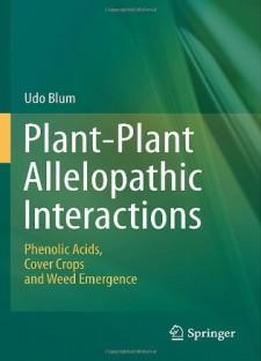
Plant-plant Allelopathic Interactions: Phenolic Acids, Cover Crops And Weed Emergence
by Udo Blum /
2011 / English / PDF
2.6 MB Download
In an effort to implement conservation measures farmers have used a
variety of production methods, including the use of reduced or zero
tillage and cover crops. One benefit of these production methods
has been early season weed control. The literature suggests that a
variety of mechanisms may be involved, among them the allelopathic
effects of phenolic acids. This retrospective analysis addresses
the following: How likely are phenolic acid concentrations and
environmental conditions in wheat no-till cropping systems for the
inhibition of annual broadleaf weed emergence? and Do phenolic
acids have a dominant role or are they just one component of a
larger promoter/modifier/inhibitor complex? The book covers
allelopathic plant-plant interactions, laboratory and field
experiments, and future research. It uses a journal format,
provides justifications for procedures used, if-then hypotheses,
and cons and pros so that readers can reach their own conclusions.
In an effort to implement conservation measures farmers have used a
variety of production methods, including the use of reduced or zero
tillage and cover crops. One benefit of these production methods
has been early season weed control. The literature suggests that a
variety of mechanisms may be involved, among them the allelopathic
effects of phenolic acids. This retrospective analysis addresses
the following: How likely are phenolic acid concentrations and
environmental conditions in wheat no-till cropping systems for the
inhibition of annual broadleaf weed emergence? and Do phenolic
acids have a dominant role or are they just one component of a
larger promoter/modifier/inhibitor complex? The book covers
allelopathic plant-plant interactions, laboratory and field
experiments, and future research. It uses a journal format,
provides justifications for procedures used, if-then hypotheses,
and cons and pros so that readers can reach their own conclusions.











